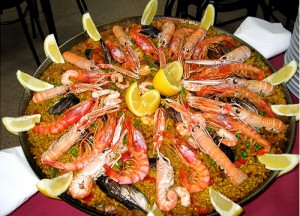As typhoon Haiyan, or Yolanda, as it’s called in the Philippines, has swept through this Asia-Pacific island country, it caused massive destruction with as many as 10000 feared dead. With the prayers and relief coming to the Philippines from all over the world, we thought it would be a good idea to mention something not so many know about.
As Spanish speakers and language learners, we usually keep the list of Spanish speaking countries in mind. Yet, not all of us know that until relatively recently, Philippines used to be a Spanish speaking country, too. Philipino, or Tagalog, one of the two official languages (the second official language is English now), bears a lot of similarities with the Spanish pronunciation and vocabulary.
Spanish was introduced in the Philippines after 1565, when the Spanish Conquistador Miguel López de Legazpi sailed there from Mexico and founded the first Spanish settlement on Cebú. As the colonial rule was established, the first printing press founded and the first books released were in Spanish. In the 17th century, Spanish religious orders founded the first universities in the Philippines, some of which are considered the oldest in Asia (University of Santo Tomás in Manila and the University of San Carlos in Cebú). During colonial rule through Mexico City, Spanish was the language of education, trade, politics and religion, and by the 19th century, it became the country’s primary language, although it was mainly used by the educated Filipinos.
In the 19th century, a Spanish decree introduced a system of public education, creating free public schooling in Spanish. Shortly, this island nation, the Philippines had a prominent group of Spanish-speaking scholars and thought leaders, many of whom participated in the Philippine Revolution and later in the struggle against American occupation. In 1899, the First Philippine Republic established Spanish as the country’s official language, with both the constitution and the anthem written in Spanish. However, the independent republic itself didn’t last long.
As a result of the Spanish-American war, Spain ceded the islands to the United States. Under U.S. rule, the English language began to be promoted instead of Spanish, and the use of Spanish promptly declined. The 1950 census stated that Filipinos who spoke Spanish as a first or second language made up only 6% of the population. And another 40 years later, in 1990, the census reported that the number had dwindled to just 2,500.
Spanish lost its official status in 1987, and was dropped as a college requirement, remaining an optional course. Today, it is a required subject in only some academic institutions, such as the University of Santo Tomás in Manila and the University of San Carlos in Cebú.
Former president Gloria Macapagal Arroyo, a third-language Spanish speaker, introduced legislation to re-establish the instruction of Spanish in 2009. Today, the language is still spoken by Filipino-Spanish families, mainly concentrated in Metro Manila, Iloílo and Cebú. Yet, despite government promotions of Spanish, less than 0.5% of the population are able to speak Spanish at least proficiently.
While the Spanish language has never been 100% accepted by the Philippines population, it is still reflected in the country’s culture and art, and has contributed a number of words and expressions in Tagalog, Cebuano, and other Philippine languages. Here’s to hopes and prayers for this island nation recovering from the terrible tragedy.

San Augustin Church in Manila, built in the early 17th century









